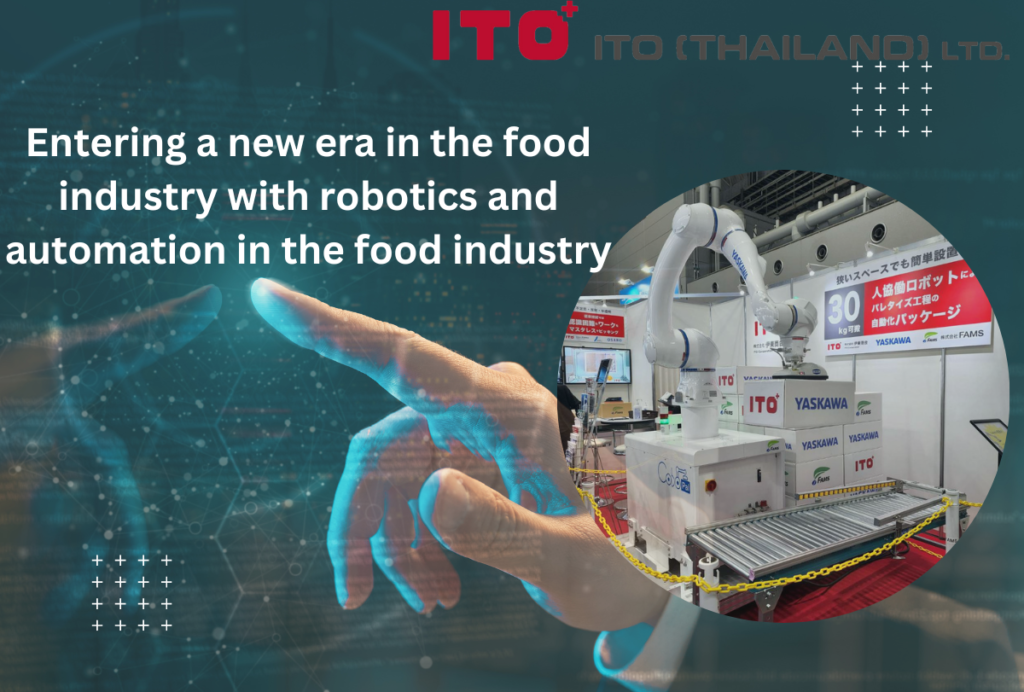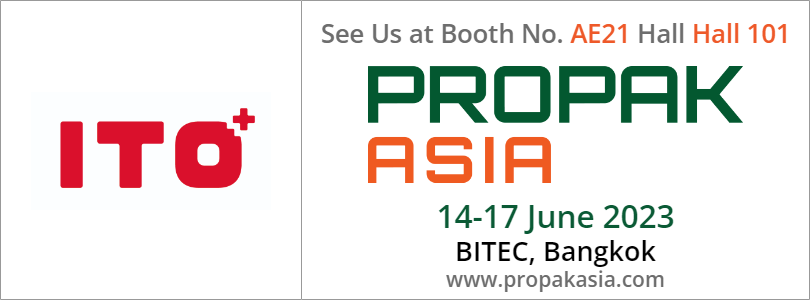ITO Thailand Hygiene Blog
Robots & automation in the food industry
Many issues in the food industry can now be solved with new technologies, one of which is the introduction of automation and robotics into the food production process. Today, we would like to present some of the issues with which automation and robots can help.
Production efficiency issues
Robots and automation can help speed up production, resulting in a greater daily production capacity. They also improve process efficiency. For instance, weighing several pieces of meat together to reach the required amount on the package. Using an automatic weighing system can increase the speed of weighing food and allows quick calculations so that the result is closer to the required weight. This makes it possible to reduce the amount of excess weight in each bag. Or in the case of moving objects (e.g., raw materials, products, packages, boxes, etc.), the use of robots and automation can help sort and move targeted objects quickly and accurately.
In addition, robots and automation can also increase the efficiency of space utilization in the production area. For example, in some production processes where space is limited and an additional production line cannot be built, adding robots to production line bottlenecks (e.g., palletizing areas) can increase production output. In the case of a cold room/freezer room with limited space, including limited space for building a new cold room/freezer room, installing a mobile rack system can increase the storage space in the existing cold room/freezer room. The system also allows the installation of a product counting system and automatic locating of products in the warehouse.
Issues of errors in the production process
Robots and automation are highly accurate and can reduce production errors caused by human factors such as health, fatigue, distraction, rushing to complete large volumes of work, or insufficient staff, etc. The use of automated systems to help verify the accuracy of quality and safety, such as OCR systems, sensors, still and video camera, (Read more: Use of AI in the food industry) will reduce erroneous products and identify the root cause of the error more quickly. This has a positive effect on the sustainability of the production process as it can reduce waste.
Employee well-being
Some parts of the production process affect the health and well-being of employees, such as noisy areas, processes that involve the use of hazardous chemicals (e.g., substances with carcinogenic risk, substances harmful to the respiratory system, strong corrosive acids, or alkalis, etc.). Similarly, some production processes require working with sharp objects, such as using a knife to trim or dissect food pieces, if employees are tired, they are prone to accidents. Or lifting heavy packaging can also affect the health and back injuries of employees. In addition, in a work condition where it is a wet process with high humidity, the employees may be exposed to the risk of Athlete’s foot. Production and storage conditions that require temperature control also affect the employee’s well-being. For instance, in production processes that use steam or high temperatures, there may be a risk of accidental hot water or scalding. If the employees have to work for long periods in cold storage or freezer conditions, it is also dangerous. Therefore, the use of robots and automation to assist in the production process or these risky areas can reduce the dangers to the employees or help improve their well-being at work.
Contamination issues
Food safety is the core of food production in every era. The introduction of robotics and automation to assist in production processes that require food contact, especially in high-risk food zones (Read more: Risk-based zoning of production areas), can reduce human-borne contamination such as hair, threads, jewelry, dirt, and even microorganisms from the human body (Read more: Contamination caused by humans). Robots and automation require hygienic design, the materials used must be safe, can come in contact with food, are not corrosive, do not contaminate food, have few corners, and can be cleaned and disinfected as appropriate.
6 things to know before starting a robotics and automation project
If you want to introduce automation or robotics into your organization, what are the required preparations
You can contact and talk to the team of Ito (Thailand) here by preparing only 6 details for mutual understanding.
1.Process: What is the production process that requires the use of robots or automation? What do you want the system to do such as drilling, picking, placing, collating, welding, weighing, etc.?
2.Product: What is the nature of the workpiece or product? Is it food pieces (easily broken or not, type of humidity)? Or is it in a bag, a can, a box, etc.?
3.Target: Targeted expectations compared to existing ones, such as wanting to increase production speed, reduce the number of employees, reduce the amount of waste, etc.
4.Area: Area for placing robotic or automated systems in the production line area
5.Cost: Project budget to calculate the break-even point
6.Others: Other specific requirements such as high/low temperature operation, non-sparking, food contact grade materials, standards, etc.
When Ito (Thailand) has received these issues, we will be able to design products that are specific to your needs and design 3D simulation to see the possibilities before the actual build to meet your requirements.
Related Post
-

Biodegradable Packaging
As straightforward as its name, it means any packaging that will naturally fall apart and decompose. In recent years, biodegradable packaging has been included as one of the sustainable development goals for several organisations. A similar issue, bioplastics, an alternative to sustainable living, was discussed in a previous blog. However, there are some differences between them. For example, bioplastics are made from raw materials sourced from renewable and natural sources and could or could not be biodegradable. In contrast, biodegradable plastic can naturally degrade through living organisms no matter the source material it originates from. The development history of biodegradable packaging, frequently used materials, the pros and cons of biodegradable packaging, and its future trends will be discussed in this blog.
-
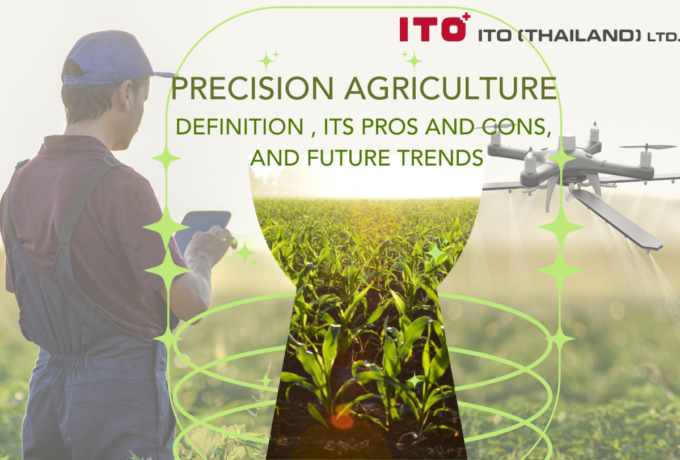
Precision Agriculture
Precision agriculture has revolutionised how we approach crop management by optimising the inputs to meet specific requirements. Even though it is not a new system, recent technologies have made it possible to apply it in practical productions. In this blog, we will discuss the definition of precision agriculture, its pros and cons, and future trends.
-
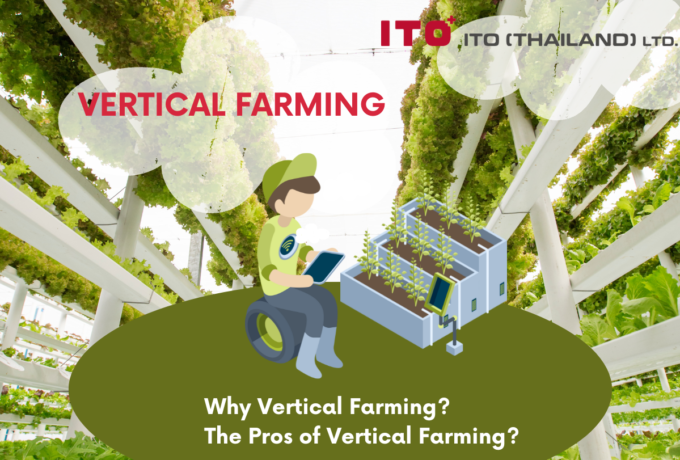
Vertical Farming
Agriculture has utilised nearly all the available land, causing growing difficulty in finding land on the earth’s surface. With limited resources, meeting the world’s food demands will require more innovative and dependable methods of producing safe food, and the answer lies in vertical farming.
-
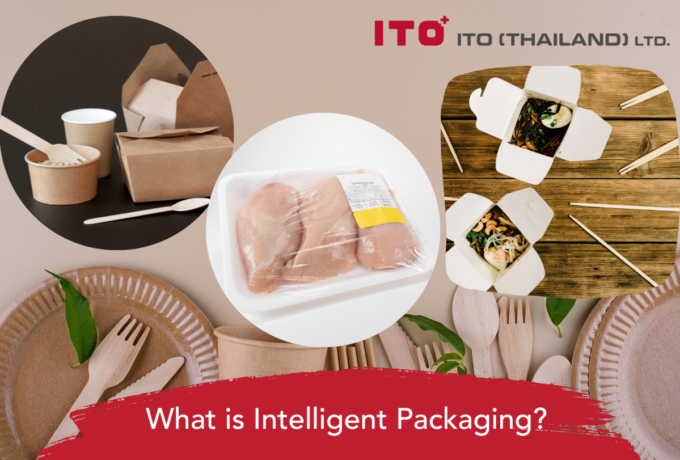
Intelligent Packaging
Without packaging, food products would last for only a short period of time, impossible for logistics management, difficulties in the supply chain system, quick quality deterioration, and prone to contamination to risky foodborne pathogens. In reality, there are many more functions that packaging is contributing to food products, as well as many types of smart packaging. Intelligent packaging is considered to be a part of smart packaging, so in this blog, we will discuss the contribution of intelligent packaging to food products.
-
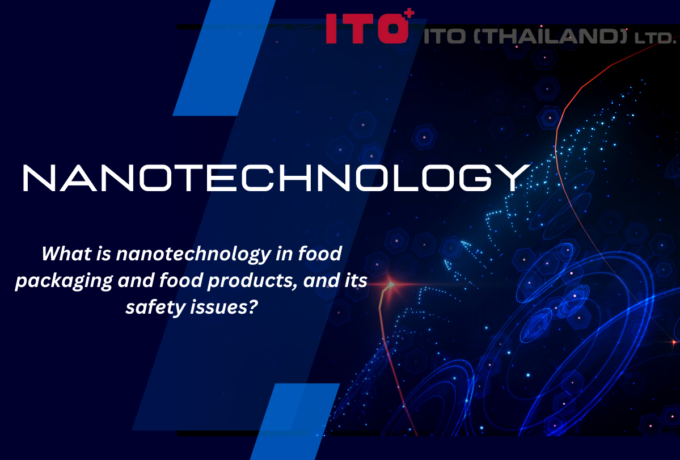
Nanotechnology in the Food Industry
Nanotechnology has been brought to our attention for the last decades, and it has provided various beneficial applications to the food industry. Unlike other technology, nanotechnology has broadened the knowledge in the food industry to another level in a nanoscale dimension. It involves almost every aspect of the food industry, including food packaging, food processing, as well as functional food development and enhancement of food safety. In this blog, we will discuss how nanotechnology is used in food packaging and food products, and the most important part, its safety issues.
-
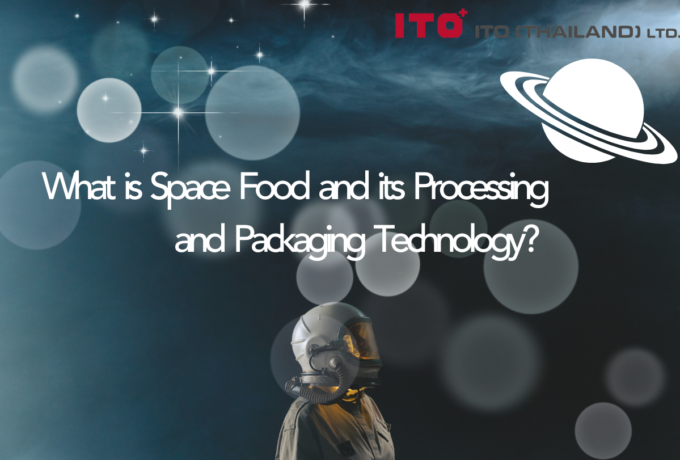
Space Food (Part 1)
In recent years, there has been a number of research in regard to foods for long-term transport. We have discussed that some types of food, such as 3D printed food, are customisable and able to create personalised meals. Doubtlessly, it is capable of long-term missions such as aerospace and military applications. Space food, its processing and packaging technology, as well as space food and waste management will be discussed in this blog.








